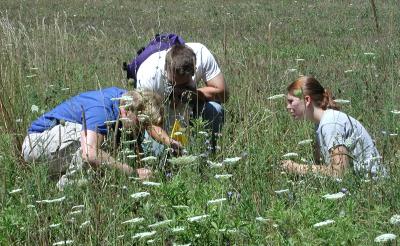 This first field trip was a dry run in using some of the
data collection and analysis techniques that will be employed
in field projects once in Australia.
This first field trip was a dry run in using some of the
data collection and analysis techniques that will be employed
in field projects once in Australia.
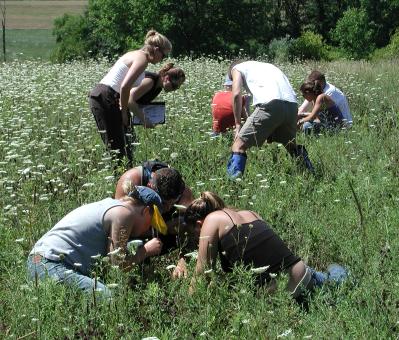 The Henry Hanley Biological Field Preserve
located near Cayuga Lake some 15 miles from
campus, includes 108 acres of gently sloping land
with over 60 natural and man-made ponds.
Burrough's Creek runs through the preserve,
eventually draining into Cayuga Lake. The major
vegetation types include agriculatural fields,
deciduous forest, old field/scrub, and a small
stand of pines.
The Henry Hanley Biological Field Preserve
located near Cayuga Lake some 15 miles from
campus, includes 108 acres of gently sloping land
with over 60 natural and man-made ponds.
Burrough's Creek runs through the preserve,
eventually draining into Cayuga Lake. The major
vegetation types include agriculatural fields,
deciduous forest, old field/scrub, and a small
stand of pines.
Here students collect species-area data in nested plots in
an open field location.
 This first field trip was a dry run in using some of the
data collection and analysis techniques that will be employed
in field projects once in Australia.
This first field trip was a dry run in using some of the
data collection and analysis techniques that will be employed
in field projects once in Australia.
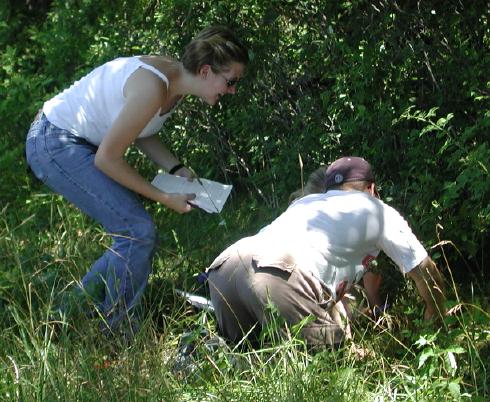 The Richard Ryan Field Laboratory is located on
the preserve and serves as a base for conducting
ecological research and as a classroom during
rainy weather. The preserve hosts a wide diversity
of plants and animals, including whitetail deer,
coyotes, red fox, beaver, mink, muskrats, redtail
hawks, greatblue herons, green herons, Canada
geese, and many species of ducks.
The Richard Ryan Field Laboratory is located on
the preserve and serves as a base for conducting
ecological research and as a classroom during
rainy weather. The preserve hosts a wide diversity
of plants and animals, including whitetail deer,
coyotes, red fox, beaver, mink, muskrats, redtail
hawks, greatblue herons, green herons, Canada
geese, and many species of ducks.
Other groups of students collected species-area data in the
transition zone from the open field to the woodlot adjacent
to the field.
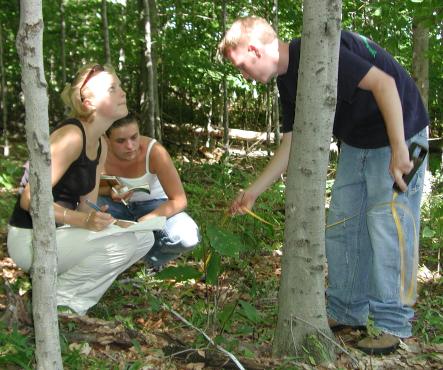
Students collected point-center quarter data along transects in the woodlot.
At random points along
the transect, the circumference of the nearest trees and the distance from the
transect were measured and the species noted.
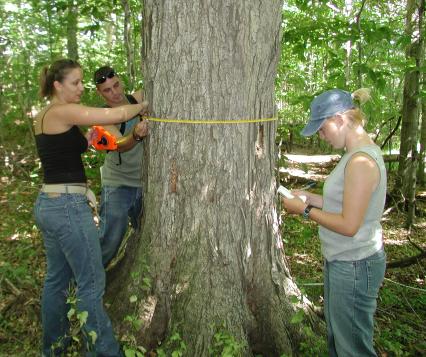
Measuring the circumference of a tree in one of the quarters nearest to the
random point on the transect.
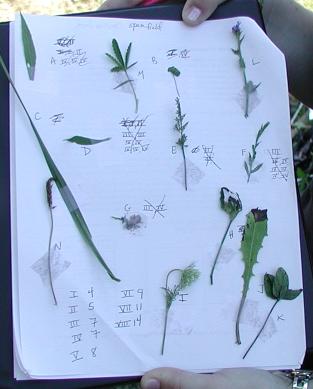 In a third exercise, students collected species frequency at points every 0.5 m along
a 100 m transect. The data were used to measure plant species diversity in the open field
site. Here we see a typical catalog of plant species found in the open field.
In a third exercise, students collected species frequency at points every 0.5 m along
a 100 m transect. The data were used to measure plant species diversity in the open field
site. Here we see a typical catalog of plant species found in the open field.
One of the non-plant species in the open field was this garden spider (below). It is a member of the family Araeidae, the orb weavers. Many species of this family are relatively large, like this one Agriope which makes an intricate web. Notice its prey in the lower center of the photo.
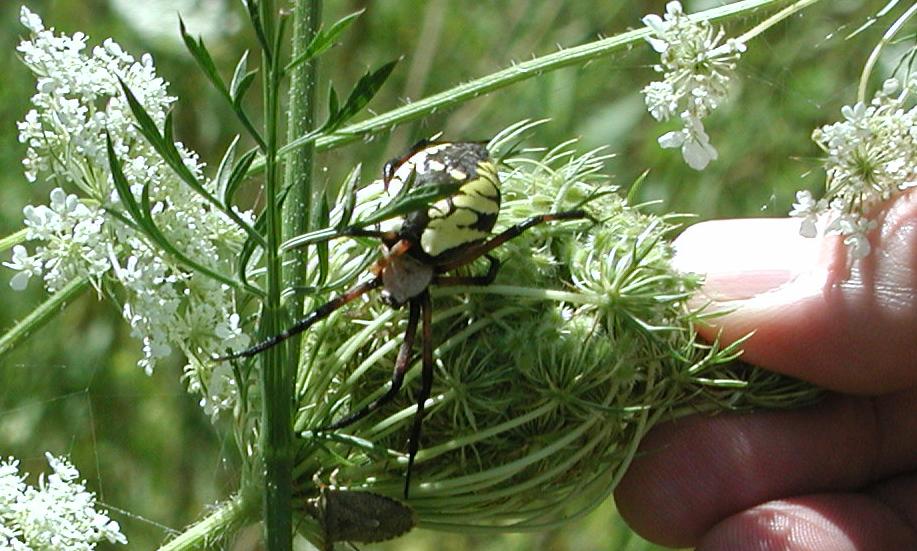
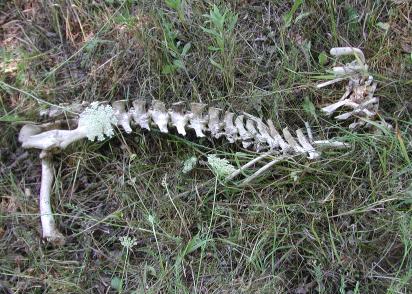 There are a number of deer on the Preserve. This one may have been killed by
coyotes, which are also present here.
There are a number of deer on the Preserve. This one may have been killed by
coyotes, which are also present here.